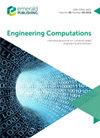Maturity grading of jujube for industrial applications harnessing deep learning
IF 1.5
4区 工程技术
Q3 COMPUTER SCIENCE, INTERDISCIPLINARY APPLICATIONS
引用次数: 0
Abstract
PurposeTo develop and examine an efficient and reliable jujube grading model with reduced computational time, which could be utilized in the food processing and packaging industries to perform quick grading and pricing of jujube as well as for the other similar types of fruits.Design/methodology/approachThe whole process begins with manual analysis and collection of four jujube grades from the jujube tree, in addition to this jujube image acquisition was performed utilizing MVS which is further followed by image pre-processing and augmentation tasks. Eventually, classification models (i.e. proposed model, from scratch and pre-trained VGG16 and AlexNet) were trained and validated over the original and augmented datasets to discriminate the jujube into maturity grades.FindingsThe highest success rates reported over the original and augmented datasets were 97.53% (i.e. error of 2.47%) and 99.44% (i.e. error of 0.56%) respectively using Adam optimizer and a learning rate of 0.003.Research limitations/implicationsThe investigation relies upon a single view of the jujube image and the outer appearance of the jujube. In the future, multi-view image capturing system could be employed for the model training/validation.Practical implicationsDue to the vast functional derivatives of jujube, the identification of maturity grades of jujube is paramount in the fruit industry, functional food production industries and pharmaceutical industry. Therefore, the proposed model which is practically feasible and easy to implement could be utilized in such industries.Originality/valueThis research examines the performance of proposed CNN models for selected optimizer and learning rates for the grading of jujube maturity into four classes and compares them with the classical models to depict the sublime model in terms of accuracy, the number of parameters, epochs and computational time. After a thorough investigation of the models, it was discovered that the proposed model transcends both classical models in all aspects for both the original and augmented datasets utilizing Adam optimizer with learning rate of 0.003.利用深度学习对红枣进行成熟度分级,以实现工业应用
目的开发和研究一种高效可靠的红枣分级模型,减少计算时间,可用于食品加工和包装行业,对红枣以及其他类似类型的水果进行快速分级和定价。整个过程从人工分析和收集枣树上的四个红枣等级开始,此外还利用 MVS 采集红枣图像,然后进行图像预处理和增强任务。最后,在原始数据集和增强数据集上训练和验证了分类模型(即提议的模型、从零开始的模型和预训练的 VGG16 和 AlexNet),以区分红枣的成熟度等级。使用 Adam 优化器和 0.003 的学习率,原始数据集和增强数据集的最高成功率分别为 97.53%(即误差为 2.47%)和 99.44%(即误差为 0.56%)。实际意义由于大枣具有多种功能性衍生物,因此在水果业、功能性食品生产业和制药业中,识别大枣的成熟度等级至关重要。原创性/价值本研究对所选优化器和学习率的 CNN 模型进行了性能测试,将红枣成熟度分为四个等级,并与经典模型进行了比较,从准确度、参数数量、epochs 和计算时间等方面描述了崇高模型。在对模型进行深入研究后发现,在使用学习率为 0.003 的亚当优化器的原始数据集和增强数据集上,所提出的模型在各个方面都超越了经典模型。
本文章由计算机程序翻译,如有差异,请以英文原文为准。
求助全文
约1分钟内获得全文
求助全文
来源期刊

Engineering Computations
工程技术-工程:综合
CiteScore
3.40
自引率
6.20%
发文量
61
审稿时长
5 months
期刊介绍:
The journal presents its readers with broad coverage across all branches of engineering and science of the latest development and application of new solution algorithms, innovative numerical methods and/or solution techniques directed at the utilization of computational methods in engineering analysis, engineering design and practice.
For more information visit: http://www.emeraldgrouppublishing.com/ec.htm
 求助内容:
求助内容: 应助结果提醒方式:
应助结果提醒方式:


